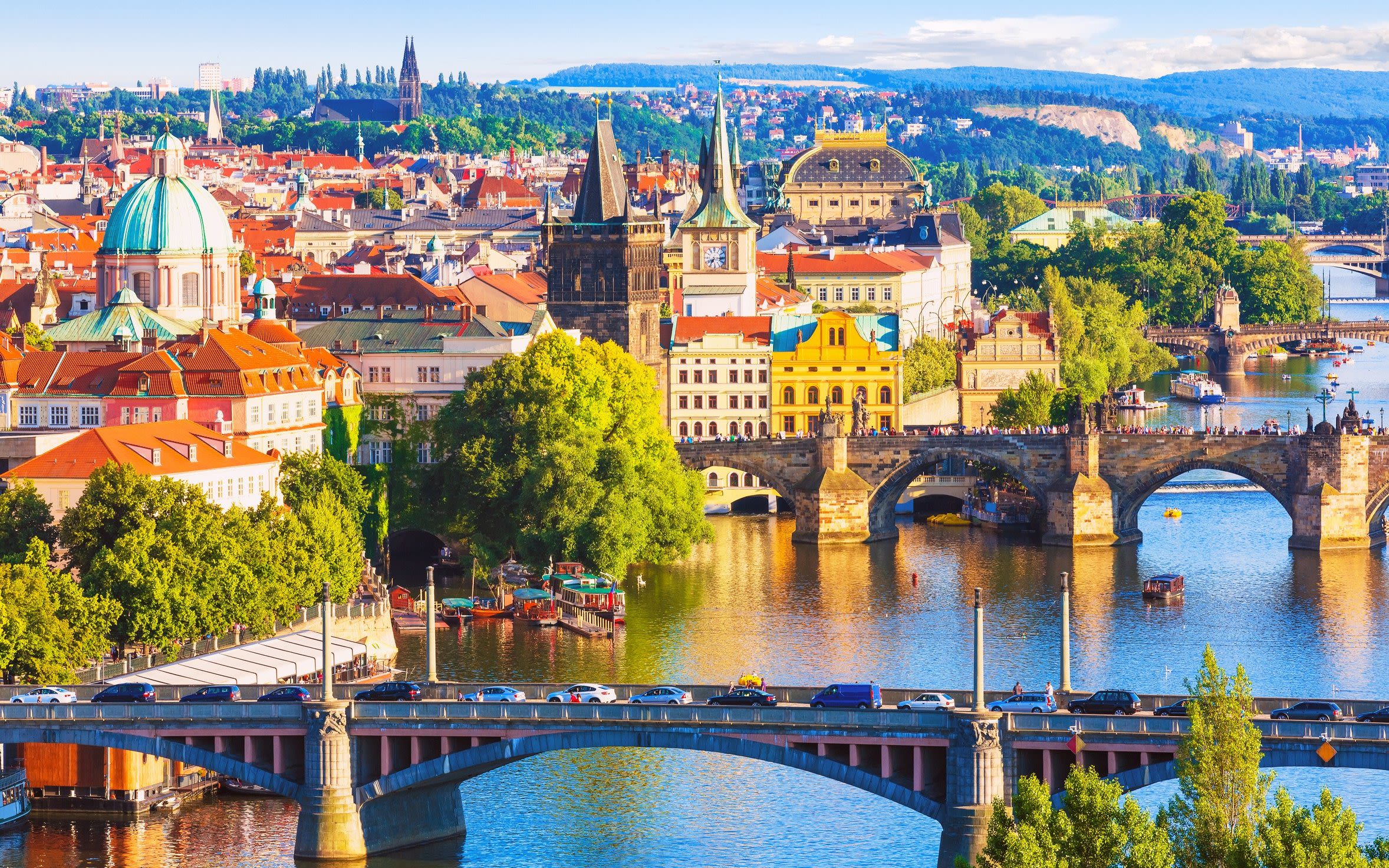Search results
- By the 14th century Prague had become a major central European city, with the Czech money minted at nearby Kutná Hora serving as the hard currency of the entire region.
www.britannica.com › place › Prague
Prague is a political, cultural, and economic hub of Central Europe, with a rich history and Romanesque, Gothic, Renaissance and Baroque architectures. It was the capital of the Kingdom of Bohemia and residence of several Holy Roman Emperors, most notably Charles IV (r. 1346–1378) and Rudolf II (r. 1575–1611).
People also ask
What is Prague known for?
Why was Prague chosen as its capital?
How did Prague become a city?
Why is Prague a top destination?
- Overview
- The landscape
- The people
Prague, city, capital of the Czech Republic. Lying at the heart of Europe, it is one of the continent’s finest cities and the major Czech economic and cultural centre. The city has a rich architectural heritage that reflects both the uncertain currents of history in Bohemia and an urban life extending back more than 1,000 years.
The physical attractions and landmarks of Prague are many. Among the finest is the Charles Bridge (Karlův most), which stands astride the Vltava River. The winding course of the Vltava, with its succession of bridges and changing vistas, contrasts with the ever-present backdrop of the great castle of Hradčany (Prague Castle), which dominates the left-bank region of the city from behind massive walls set high on a hill. The narrow streets and little taverns and restaurants of the older quarters contrast with the broad sweep of Wenceslas Square and modern parks and housing developments, while the great 18th-century Baroque palaces have their own elegance and splendour. Seen from the surrounding hills, the many church towers make up a unique perspective, giving Prague its description as the “city of a hundred spires.” This architectural harmony was enhanced by post-1945 planning, which preserved the ancient core of the city as a major monument and carefully supervised all modern building. In 1992 the historic city centre was added to UNESCO’s World Heritage List.
From its original small riverside settlements, Prague has spread over its hills, up river valleys, and along riverside terraces. The Prague metropolitan area covers 192 square miles (496 square kilometres).
Britannica Quiz
World Capitals Quiz
The city’s core, with its historic buildings, bridges, and museums, is a major centre of employment and traffic congestion. Around the core is a mixed zone of industrial and residential areas, containing about half the city’s population and nearly half its jobs. Surrounding this area is the outer city development zone, and beyond this is yet another zone of development containing new industrial areas, parks and recreation areas, and sports facilities. Finally, there is a belt of agricultural land and open countryside, where farms and market gardening projects satisfy Prague’s demand for food.
The lowest point in the city is 623 feet (190 metres) above sea level, and the highest point is 1,247 feet (380 metres) on White Mountain (Bílá hora). The climate of Prague is typically mid-continental, with temperatures there averaging 67 °F (19.3 °C) in July and 31 °F (−0.6 °C) in January.
Students save 67%! Learn more about our special academic rate today.
Prague has a homogeneous population. There is a small Slovak community, but the overwhelming majority of residents are Czechs. The city has a number of demographic peculiarities stemming mainly from the effects of World War II; there are more women than men, and a sizable proportion of the female population is past the age of fertility. The natural...
News about AC Sparta Prague, UEFA Champions League, match
News about Manchester City, Inter Milan, Bologna
News about New Prague, Oklahoma, school bus
News about Wroclaw, Czech Republic, floods
Prehistory. The land where Prague came to be built has been settled since the Paleolithic Age. Several thousand years ago, trade routes connecting southern and northern Europe passed through this area, following the course of the river. From around 500 BC the Celtic tribe known as the Boii were the first inhabitants of this region known by name.
- 4,000
Prague is one of the most beautiful cities in Europe, and its history stretches back over 1,000 years. The city has seen the rise and fall of empires, and has been home to some of the most important historical figures in European history.
Prague is the capital of the Czech Republic and the most important city in the Bohemia region. It has a privileged location in Central Europe and has been a political, cultural, and economic hub since its foundation, making it today one of the top destinations in this part of the world.
Sep 15, 2024 · By the 14th century Prague had become a major central European city, with the Czech money minted at nearby Kutná Hora serving as the hard currency of the entire region. Foreign merchants, notably Germans and Italians, became economically and politically powerful in uneasy alliance with the kings.
Aug 26, 2024 · Prague, the capital of the Czech Republic, is a city steeped in history, its roots tracing back over a millennium. Often referred to as the “City of a Hundred Spires,” Prague’s skyline is dotted with Gothic churches, Baroque palaces, and medieval structures that tell the story of its rich and varied past.





